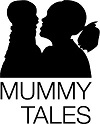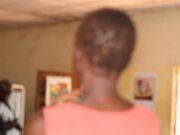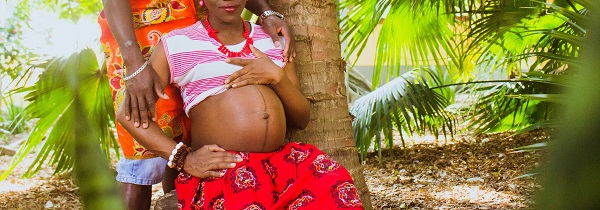What can I expect from a caesarean section delivery? Which is the best week in pregnancy to undergo a cesarean delivery? Is it best to have it under spinal anaesthesia or general anaesthesia? What are the associated risks of a caesarean section to both the mother and her baby?
These are some of the questions many pregnant women have, especially if there is the likelihood of them delivering via caesarean section. Read more about it in this article.
By Dr. Sikolia Wanyonyi, Consultant in Obstetrics and Foetal Medicine, Nairobi.
Caesarean section (C-section) is the commonest surgical operation performed worldwide. Over the years, there has been a worrying upward trend in the rates of C- sections performed in many institutions globally.
The rates in most developed countries (with exception of Scandinavian countries) are above 30 per cent with rates in some parts of South America being as high as 75 per cent. In Kenya the rates vary depending on the institution. In most private hospitals and tertiary hospitals the rates range from 20 per cent to as high at 55 per cent while in public hospitals and middle level facilities the rates could be as low as two per cent.
According the World Health Organization (WHO), the ideal ratio of C-section in a country should be between 10 – 15 per cent. A rate below 10 per cent is considered to represent substandard care while high rates may indicate unnecessary use of the surgery.
The aim of C-section is for safe delivery of the baby and mother. There are many reasons why this procedure is performed. Broadly, these are divided into elective and emergency.
 Elective Caesarean Section
Elective Caesarean Section
An elective C-section refers to a planned surgery and categorized into four groups depending on the urgency of the surgery. Some people erroneously think that an elective C-section is one that is performed on request by the woman. This is not always the case since there are many situations where it is known beforehand that vaginal delivery would be dangerous.
Such dangers include an abnormally implanted placenta, previous multiple caesarean sections, or other surgeries on the womb such as fibroid removal, extremely big babies and congenital anomalies such as hydrocephalus among others.
In these cases, the attending doctors will advise on the timing of the delivery, usually between 38 to 39 weeks. The reason for this is to prevent any eventuality of the women going into labour, a situation that could necessitate an emergency C-section with associated attending risks.
Emergency Caesarean Section
Emergency C-section on the other hand is performed if in the assessment of the attending doctor, it is felt that continuing with either labour or pregnancy could be dangerous to the health of either the mother or the foetus. Some of the indications include distress of the baby, prolonged labour, failure of the cervix to open up, abnormal bleeding in pregnancy and prolapse of the umbilical cord among others.
Spinal Anaesthesia
Unless otherwise indicated, a C-section should always be performed under spinal anaesthesia. This is the safest mode of anaesthesia in a pregnant woman. During this procedure, the woman is given a numbing injection on their back. This numbs the lower part of the body and the woman does not perceive pain as the surgery is undertaken.
Besides the advantage of being able to see and bond with the baby immediately after birth, spinal anaesthesia is safe because it limits the risk of choking with stomach contents that is more likely to happen with pregnant women receiving general anaesthesia.
Caesarean Section Risks
While C-section remains a life saving procedure for the mother and the baby, it is also associated with risks to both of them. Every mother undergoing the procedure either electively or as an emergency should be fully aware of these risks and discuss them with their attending practitioners.
 While safety of the procedure has improved over the years with the advance in medicine practice, one has to remember that this is a major operation. It is for this reason that a caesarean section should only be performed when there is compelling medical reasons to perform it.
While safety of the procedure has improved over the years with the advance in medicine practice, one has to remember that this is a major operation. It is for this reason that a caesarean section should only be performed when there is compelling medical reasons to perform it.
Some of the immediate risks associated with C-section include excessive bleeding, injury to other organs such as bladder and gut, infection, prolonged pain post surgery and increased risk of forming clots within the blood vessels, which could be lethal.
The long-term risks include persistent scar pain, scarring of the abdomen making subsequent surgeries more dangerous, limit on the number of pregnancies, risk of placenta sticking to the womb which in itself is a life threating condition and higher risk of low implantation of placenta in subsequent pregnancies.
Babies born through C-section are also at increased risk of breathing problems, compared to those born vaginally. This results in higher incidences of admission for special care nursery. There are also attended anaesthetic risks like those mentioned earlier.
We therefore need to bear in mind that caesarean section is a very important life-saving procedure beneficial to both the mother and baby. Despite the above risks, there have been many advances in the medical field practice that have improved the safety of C-section deliveries. However, this does not justify deliberate use of the procedure as an alternative to vaginal birth. It should only be reserved for those women who need it.
Are you an expert in the field of maternal health? Do you have an article you would like to submit? Email it to me on maryanne@mummytales.com
You may also to like to watch Catherine’s experience below.
 Mummy Tales is a platform dedicated to empowering its readers on different aspects of womanhood and motherhood. Read more motherhood experiences of Kenyan moms here. Connect with Mummy Tales on: FACEBOOK l YOU TUBE l INSTAGRAM l TWITTER
Mummy Tales is a platform dedicated to empowering its readers on different aspects of womanhood and motherhood. Read more motherhood experiences of Kenyan moms here. Connect with Mummy Tales on: FACEBOOK l YOU TUBE l INSTAGRAM l TWITTER





































